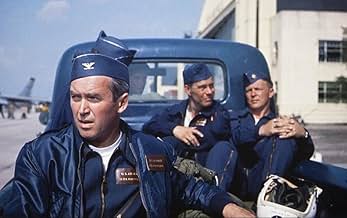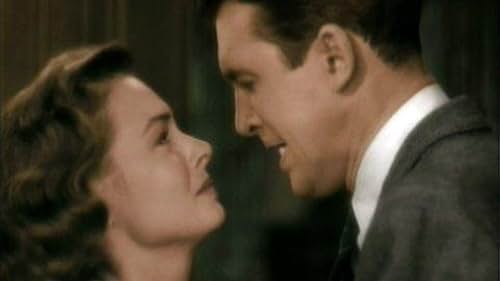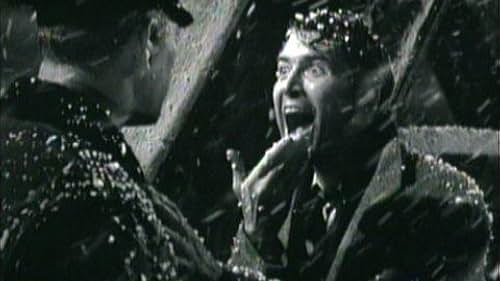James Stewart(1908-1997)
- Actor
- Director
- Producer
James Maitland Stewart was born on May 20, 1908, in Indiana, Pennsylvania, to Elizabeth Ruth (Johnson) and Alexander Maitland Stewart, who owned a hardware store. He was of Scottish, Ulster-Scots, and some English descent. Stewart was educated at a local prep school, Mercersburg Academy, where he was a keen athlete (football and track), musician (singing and accordion playing), and sometime actor.
In 1929, he won a place at Princeton University, where he studied architecture with some success and became further involved with the performing arts as a musician and actor with the University Players. After graduation, engagements with the University Players took him around the northeastern United States, including a run on Broadway in 1932. But work dried up as the Great Depression deepened, and it was not until 1934, when he followed his friend Henry Fonda to Hollywood, that things began to pick up.
After his first screen appearance in Art Trouble (1934), Stewart worked for a time for MGM as a contract player and slowly began making a name for himself in increasingly high-profile roles throughout the rest of the 1930s. His famous collaborations with Frank Capra, in You Can't Take It with You (1938), Mr. Smith Goes to Washington (1939), and, after World War II, It's a Wonderful Life (1946) helped to launch his career as a star and to establish his screen persona as the likable every man.
Having learned to fly in 1935, he was drafted into the United States Army in 1940 as a private (after twice failing the medical for being underweight). During the course of World War II, he rose to the rank of colonel, first as an instructor at home in the United States, and later on combat missions in Europe. He remained involved with the United States Air Force Reserve after the war and officially retired in 1968. In 1959, he was promoted to brigadier general, becoming the highest-ranking actor in U.S. military history.
Stewart's acting career took off properly after the war. During the course of his long professional life, he had roles in some of Hollywood's best-remembered films, starring in a string of Westerns, bringing his every man qualities to movies like The Man Who Shot Liberty Valance (1962)), biopics (The Stratton Story (1949), The Glenn Miller Story (1954), and The Spirit of St. Louis (1957), for instance, thrillers (most notably his frequent collaborations with Alfred Hitchcock), and even some screwball comedies.
On June 25, 1997, a thrombosis formed in his right leg, leading to a pulmonary embolism, and a week later on July 2, 1997, surrounded by his children, James Stewart died at age 89 at his home in Beverly Hills, California. His last words to his family were, "I'm going to be with Gloria now."
In 1929, he won a place at Princeton University, where he studied architecture with some success and became further involved with the performing arts as a musician and actor with the University Players. After graduation, engagements with the University Players took him around the northeastern United States, including a run on Broadway in 1932. But work dried up as the Great Depression deepened, and it was not until 1934, when he followed his friend Henry Fonda to Hollywood, that things began to pick up.
After his first screen appearance in Art Trouble (1934), Stewart worked for a time for MGM as a contract player and slowly began making a name for himself in increasingly high-profile roles throughout the rest of the 1930s. His famous collaborations with Frank Capra, in You Can't Take It with You (1938), Mr. Smith Goes to Washington (1939), and, after World War II, It's a Wonderful Life (1946) helped to launch his career as a star and to establish his screen persona as the likable every man.
Having learned to fly in 1935, he was drafted into the United States Army in 1940 as a private (after twice failing the medical for being underweight). During the course of World War II, he rose to the rank of colonel, first as an instructor at home in the United States, and later on combat missions in Europe. He remained involved with the United States Air Force Reserve after the war and officially retired in 1968. In 1959, he was promoted to brigadier general, becoming the highest-ranking actor in U.S. military history.
Stewart's acting career took off properly after the war. During the course of his long professional life, he had roles in some of Hollywood's best-remembered films, starring in a string of Westerns, bringing his every man qualities to movies like The Man Who Shot Liberty Valance (1962)), biopics (The Stratton Story (1949), The Glenn Miller Story (1954), and The Spirit of St. Louis (1957), for instance, thrillers (most notably his frequent collaborations with Alfred Hitchcock), and even some screwball comedies.
On June 25, 1997, a thrombosis formed in his right leg, leading to a pulmonary embolism, and a week later on July 2, 1997, surrounded by his children, James Stewart died at age 89 at his home in Beverly Hills, California. His last words to his family were, "I'm going to be with Gloria now."


































